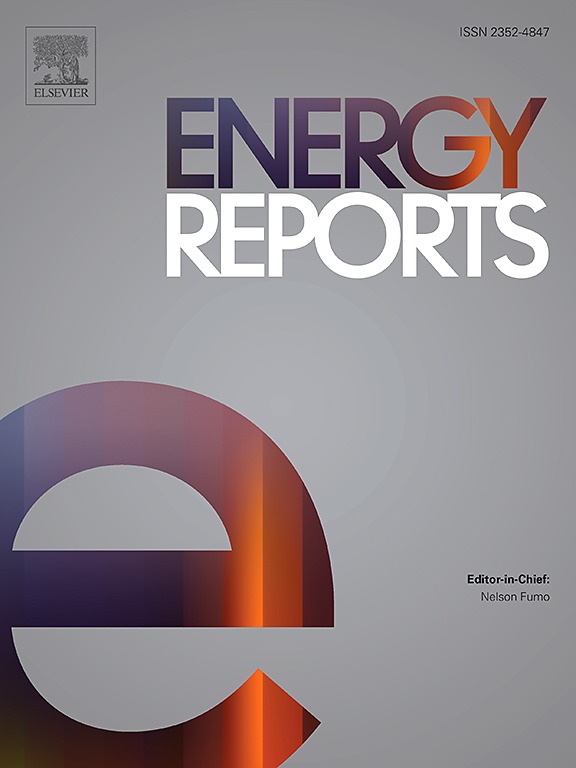非均匀辐照下运行的太阳能热电系统优化
IF 4.7
3区 工程技术
Q2 ENERGY & FUELS
引用次数: 0
摘要
聚光太阳能热电发电机(STEG)系统是将太阳能转化为电能最有前途的技术之一。高浓度聚焦显著提高了STEG系统的效率,但也带来了与太阳辐照不均匀相关的挑战,如温度分布不均匀和性能降低。在本研究中,建立了STEG系统的理论模型,研究了非均匀辐照下热电腿分布和结构对系统性能的影响。提出了一种新的集热器设计,以减轻辐照不均匀性的不利影响。研究结果表明,优化支腿结构,特别是通过x形支腿设计,可以大大提高系统效率。在系统输入功率为16.8 W时,x型支腿的最大效率为2.5 %,比传统的矩形支腿提高了67 %。此外,新设计的集热器确保稳定的系统输出,尽管辐照均匀性的变化。在输入功率为30 W时,热侧的最高点和最低点之间的温差减少到只有22.2 K,而没有集热器则为87.1 K。该集热器有效减轻了不均匀辐照的负面影响,提高了系统的均匀性和稳定性。这些结果为实际STEG系统的结构优化提供了有价值的见解。本文章由计算机程序翻译,如有差异,请以英文原文为准。
Optimization of solar thermoelectric systems operating under non-uniform irradiation
The concentrated solar thermoelectric generator (STEG) system is among the most promising technologies for converting solar energy into electricity. High-concentration focusing significantly enhances STEG system efficiency but also introduces challenges related to non-uniform solar irradiation, such as uneven temperature distribution and reduced performance. In this study, a theoretical model of the STEG system is developed to investigate the impact of thermoelectric leg distribution and structure on system performance under non-uniform irradiation. A novel heat collector design is proposed to alleviate the adverse effects of irradiation non-uniformity. The findings demonstrate that optimizing the leg structure, particularly through an X-shaped leg design, substantially improves system efficiency. At a system input power of 16.8 W, the maximum efficiency achieved with the X-shaped legs is 2.5 %, marking a 67 % improvement over conventional rectangular legs. Additionally, the newly designed heat collector ensures stable system output despite changes in irradiation uniformity. At an input power of 30 W, the temperature difference between the highest and lowest points on the hot side is reduced to just 22.2 K with the heat collector, compared to 87.1 K without it. This collector effectively mitigates the negative impacts of uneven irradiation, enhancing system uniformity and stability. These results provide valuable insights for the structural optimization of practical STEG systems.
求助全文
通过发布文献求助,成功后即可免费获取论文全文。
去求助
来源期刊

Energy Reports
Energy-General Energy
CiteScore
8.20
自引率
13.50%
发文量
2608
审稿时长
38 days
期刊介绍:
Energy Reports is a new online multidisciplinary open access journal which focuses on publishing new research in the area of Energy with a rapid review and publication time. Energy Reports will be open to direct submissions and also to submissions from other Elsevier Energy journals, whose Editors have determined that Energy Reports would be a better fit.
 求助内容:
求助内容: 应助结果提醒方式:
应助结果提醒方式:


